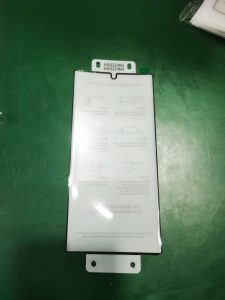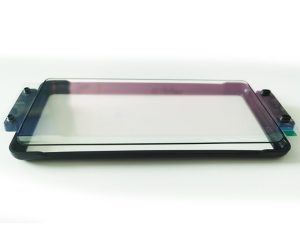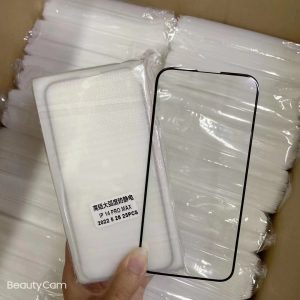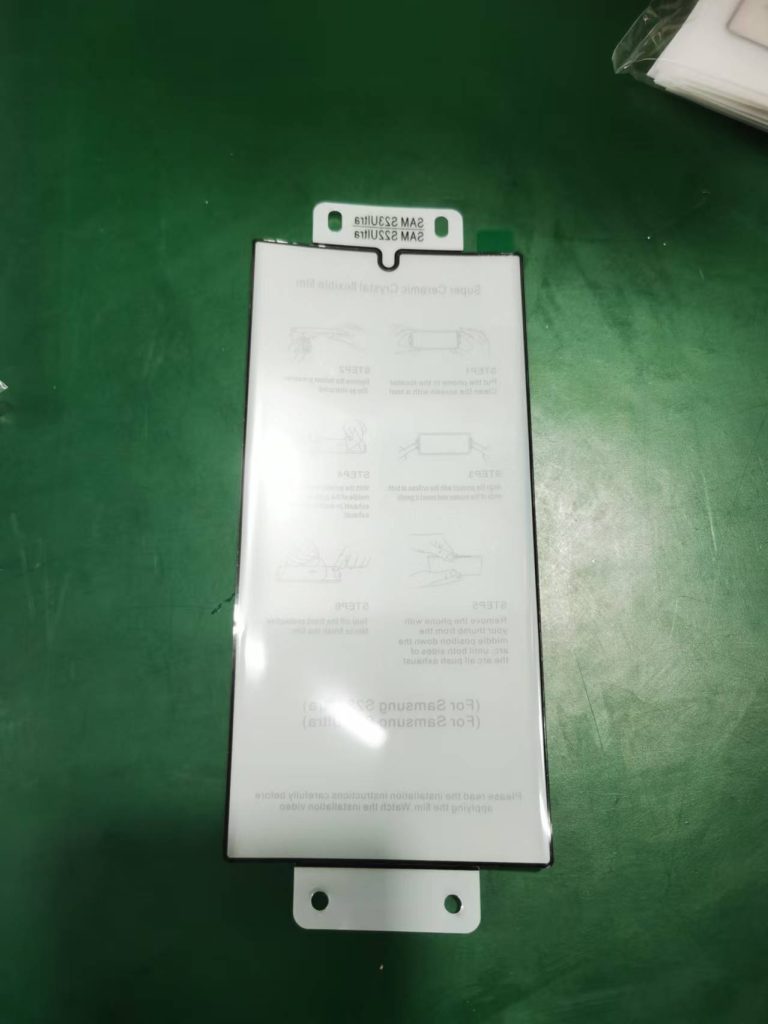The first thing most mobile phone users do after getting a new mobile phone is to apply a screen protector on their mobile phone screen. We recommend either. The reason is that no matter how various mobile phone manufacturers brag about the hardness of the glass on top of screen. As long as it is a silicon-based material, its Mohs Hardness cannot break through 7. Most of them are around 6.5 and the dust that can be seen everywhere in our lives (check our article What does 9H hardness mean in screen protectors to know more about the hardness of a tempered glass film). The smog and other particles of quartz stone and small sand particles will cause irreversible damage to mobile phone screen.

Once minor scratches arrive on mobile phone screen, they will gradually affect the appearance. Most of you know that the cost of the replacing screen for a smartphone out-of-warranty is very expensive. To avoid this situation, applying to screen protector is the best choice. The screen protector can also improve the survival chance of the mobile phone screen when external forces impact it to a certain extent. Of course, users who are not short of money can also buy similar accident insurance for mobile phones to avoid the huge expense of replacing the screen.
In the current screen protector market, there are different screen protectors that are mainly based on two materials. These are hydrogel film and tempered glass film. At the same time, it also represents two different materials with different characteristics, i.e., soft and hard. The former is a soft film, and the latter is glass. As a consumer or wholeseller, you will have many doubts like which is better for these two films? Let us have a closer look at this topic.
Raw Material of Hydrogel Film and Tempered Glass Screen Protector

The name of hydrogel film sounds a “big name”, we might think it has some complex materials. But in fact, it is made of the most common PET or TPU material. Simply put, plastic and the current high-end hydrogen screen protectors are generally made of TPU material. A common feature of these materials is that the flexibility performance is better at low temperatures. It has strong plasticity, i.e. it can be cut into any size and shape. The material also processes a specific scratch repair ability, and it can be very thin.
At the same time, the structure of a tempered glass screen protector is more complex. It is mainly covered with multiple layers of functional coatings such as silicone moulds, oleophobic layers, etc, so that it forms a hard glass “cover”. Tempered glass films have higher thickness when compared to those soft TPU hydrogel films.
Pro. & Con. of Hydrogel film and Tempered Glass Films for Mobile Phone
Hydrogel Film
Advantages: The thickness is thinner and has a higher light transmittance. It can be perfectly attached to a curved screen smartphone without any “white edges”. It does not affect the touch experience of the device. To be more precise, it can effectively prevent the emergence of minor scratches on your screen.
Disadvantages: These films cannot resist impact. That is, the protection of the smartphone screen when impacted is zero. It is very easy to produce scratches (self-healing ability is only for relatively slight scratches) on these films. Finally, the market is filled with many “high-priced IQ tax” products – These products are not so easy to apply on your smartphone screen.
In fact, at this stage, there is no significant difference between the hydrogel film available on the market and the kind of plastic film we first saw. Although it may have been improved in terms of material, the overall characteristics are still consistent. So, to conclude, the emergence of curved screen mobile phones allows the hydrogel screen protector film to bounce back.
The most significant advantage of hydrogel film over tempered glass film is that it can adapt perfectly to mobile phones with curved screens. Even though the tempered glass film is hard, it usually does not have too strong plasticity. So, for most curved screen mobile phones, it can’t achieve perfect compatibility. It will leave a layer of white edge which will affect the perception. The hydrogel film can achieve a perfect fit. The soft hydrogel film is applied on many curved screen mobile phones before they leave the factory. In addition, because the hydrogel film can be made very thin, it is better than the tempered glass film in terms of light transmittance and the impact on touch.
However, there are also many disadvantages of the hydrogel film. First, it has almost no resistance to the impact. The reason behind this is that it is a flexible material itself. Since the hardness of the hydrogel film is very low, it is easy to scratch. These scratches will affect the experience and may require frequent screen replacement. As you know, replacing a screen cost as much as buying another smartphone.
Tempered Glass Film
Advantages: It offers more robust protection and can effectively improve the impact resistance of the screen. Since it has higher hardness, it is less likely to scratch and can be covered with different films to obtain other functions.

Another advantage of the tempered glass film is the oleophobic layer. Many friends may not understand it, or do not pay attention to the oleophobic layer on the tempered glass screen protector, but it plays an important role. The oleophobic layer is a layer of water-repellent material sprayed on the surface of the tempered film. It makes the sweat (water) and oil on our fingers not easy to adhere to the surface of the screen, so that it is not easy to be stained with fingerprints. A good tempered glass film has a nice oleophobic layer, which makes the mobile phone user feel very smooth when touching the phone screen (actually tempered glass film), which is especially useful for mobile game enthusiasts.
Disadvantages: Some tempered glass films will be a failure to fit perfectly. It will leave white edges or protrusions and a thicker thickness. It will lead to a specific impact on touch response.
In modern days, tempered glass film is the most common mobile phone protective film. The most significant advantage is more robust protection performance. The tempered film is equivalent to a layer of hard armor outside the screen. Even when external forces hit the screen, the tempered film usually plays a role in the dispersion value. It will improve the survival probability of the screen.
Secondly, due to hard tempered glass material, the tempered film is less likely to produce apparent scratches. It will reduce the replacement frequency and lower the economic cost.
How to Choose Between Hydrogel Film and Tempered Glass Film?
Our advice would be if you are holding a curved screen mobile phone and there is no curved screen tempered film on the market that can adapt it thoroughly, then a hydrogel film is recommended. (If there is already a 3D tempered glass film on the market that can fully adapt to the curved screen, you should opt for it.) These films are the best choice for curved screen mobile phones. But also remind everyone that don’t buy too expensive hydrogel films! Because no matter how the merchant packs, the primary material will be made up of TPU material. There will be no obvious difference at all.
If you are holding a smartphone with a flat screen or have a corresponding curved tempered glass film that can completely cover the screen, then we recommend getting that tempered glass film. Apart from providing more robust protection, it would be a better economy.

